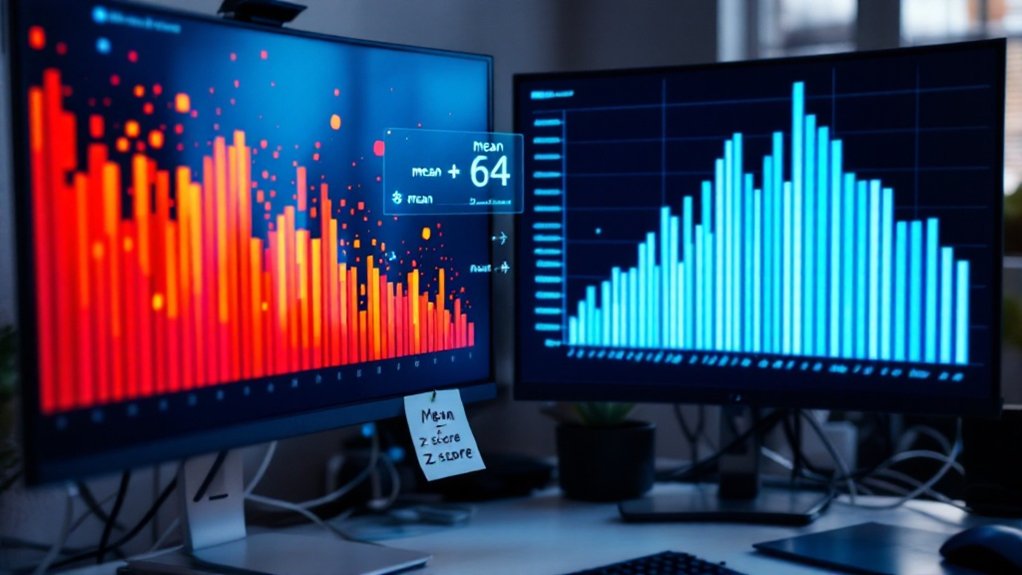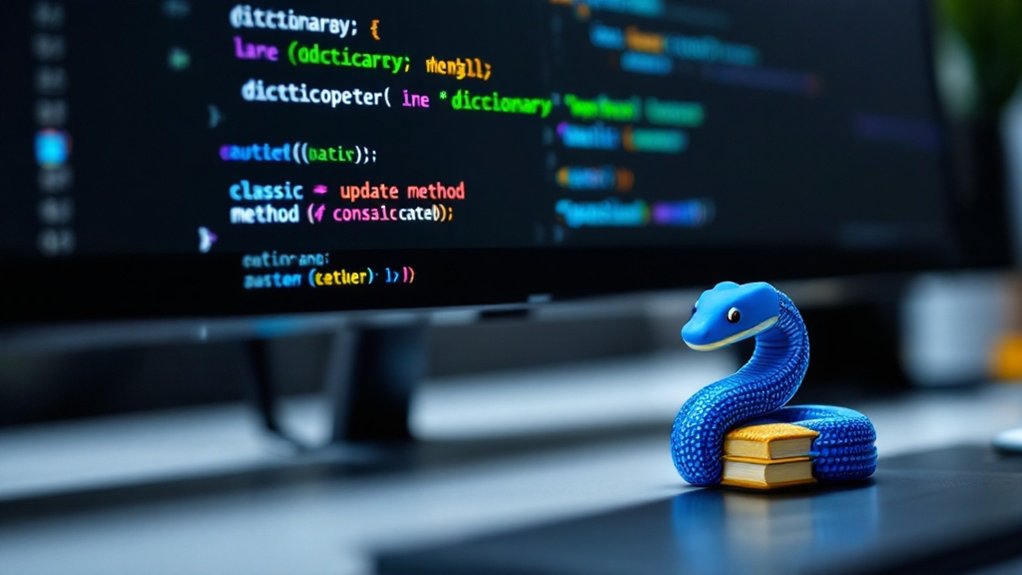Data standardization transforms raw numbers into uniform formats for machine learning algorithms. Common methods include Z-score standardization, mean normalization, and robust scaling. Each technique serves different purposes but all guarantee features contribute equally to the model. Without standardization, algorithms like SVMs, linear regression, and PCA can fail miserably. Standardized data improves convergence speed and minimizes outlier impacts. Sure, you lose original units, but you gain accuracy. The deeper details reveal why this preprocessing step separates successful models from disasters.

Data standardization transforms the messy chaos of raw numbers into something machine learning models can actually use. It's not rocket science, but skip this step and watch your model crash and burn. Machines aren't human. They don't understand why your salary data runs into millions while your age data maxes out around 100. They just see numbers. Different scales? Different ranges? Your algorithm doesn't care about your excuses.
Z-score standardization is probably the most common method. It transforms data to have a mean of 0 and standard deviation of 1. Simple formula: subtract the mean, divide by standard deviation. Done. Other methods exist too. Mean normalization scales data between -1 and 1. Robust scaling uses interquartile range to handle those pesky outliers that would otherwise wreck your model. The model training process requires clean, standardized data to achieve optimal performance. The optimization algorithms help fit standardized data to the network architecture more effectively.
Standardize or die. Z-score, mean normalization, robust scaling—pick your weapon against the chaos of raw data.
Some algorithms absolutely demand standardization. Support Vector Machines. Linear regression. Principal Component Analysis. Try running these on non-standardized data and good luck explaining the garbage results to your boss. Gradient-based algorithms converge faster with standardized data. It's just math.
The benefits are obvious. All features contribute equally to the model. No more bias toward features with big numbers. Convergence happens faster. Outliers cause less damage. And your model generalizes better to new data. Who doesn't want that?
The trade-off? You lose the original units. Standardized data doesn't mean dollars or years anymore. Just abstract numbers. But that's the point. The machine doesn't care if it's dollars or donuts. Regular monitoring and review of your standardized data is essential to ensure continued compliance with your established standards.
In the real world, standardization is everywhere. Statistical analysis. Data integration projects. Machine learning pipelines. It's step one in any serious data science workflow. And yet people still skip it. Standardization is particularly effective when your data follows Gaussian distribution, making it ideal for algorithms like SVM and Logistic Regression.
Bottom line: standardize your data. Your models will perform better. Your insights will be more reliable. Your decisions will be more informed. And you'll stop wasting time debugging models that were doomed from the start because you fed them raw, unstandardized garbage.
Frequently Asked Questions
How Does Standardization Affect Model Interpretability?
Standardization makes models easier to understand. It puts features on equal footing, so analysts can compare their importance directly.
No more skewed perspectives from different scales. Z-scores, min-max scaling – they all help show what's really driving predictions. Outliers don't dominate anymore. Feature contributions become clearer.
Without standardization? Good luck explaining why housing prices seem more important than income just because they're measured in thousands.
Models become transparent. Interpretability soars. Simple as that.
When Should I Use Normalization Instead of Standardization?
Normalization trumps standardization in several key scenarios.
Non-Gaussian data? Go with normalization. Distance-based algorithms like k-NN practically beg for it.
Need data squeezed into a specific range (like 0-1)? Normalization's your answer. It's also clutch for neural networks and when gradient descent needs a speed boost.
Tree-based models couldn't care less either way.
Bottom line: normalization makes no assumptions about distribution. Perfect when your data's weird, skewed, or needs to stay within bounds.
Can Standardization Help Reduce the Impact of Outliers?
Standardization can indeed help with outliers. But not all methods work the same.
Z-score standardization? Gets skewed by those pesky outliers. Robust scaling is the real MVP here. It uses median and interquartile range instead of mean and standard deviation. Smart move. This reduces outlier impact considerably.
Some techniques just compress everything else when outliers exist. Bottom line: pick your standardization method carefully. Robust scaling wins when outliers crash the party.
How Do I Standardize Categorical or Text Data?
Standardizing categorical data isn't like numerical data. No mean or standard deviation here. Instead, encoding is key.
One-hot encoding transforms categories into binary columns – simple but can explode dimensionality. Label encoding assigns numbers to categories, but creates false relationships.
For text? Vectorization techniques like TF-IDF or word embeddings transform words into numbers. High cardinality remains a challenge though. Sometimes merging rare categories is smart.
Different models respond differently to these transformations. No one-size-fits-all solution exists.
Should Data Be Standardized Before or After Splitting Training/Test Sets?
Standardize after splitting. Period.
Using test data for standardization creates bias that'll skew your results. The whole point of testing is to simulate real-world scenarios, right?
When you standardize before splitting, you're fundamentally letting your model "peek" at information it shouldn't have access to. Not cool.
Training data parameters should be applied to test data afterward. This maintains independence and gives a more realistic evaluation of how your model will actually perform.
No shortcuts here.




